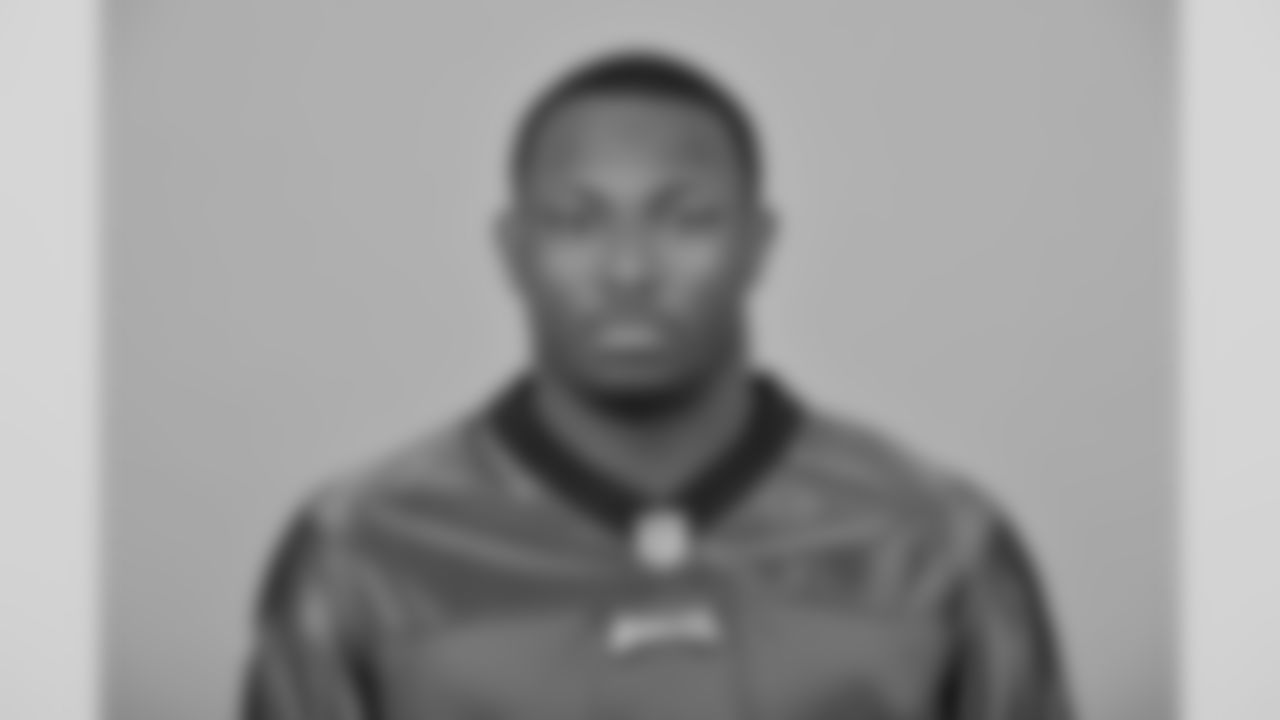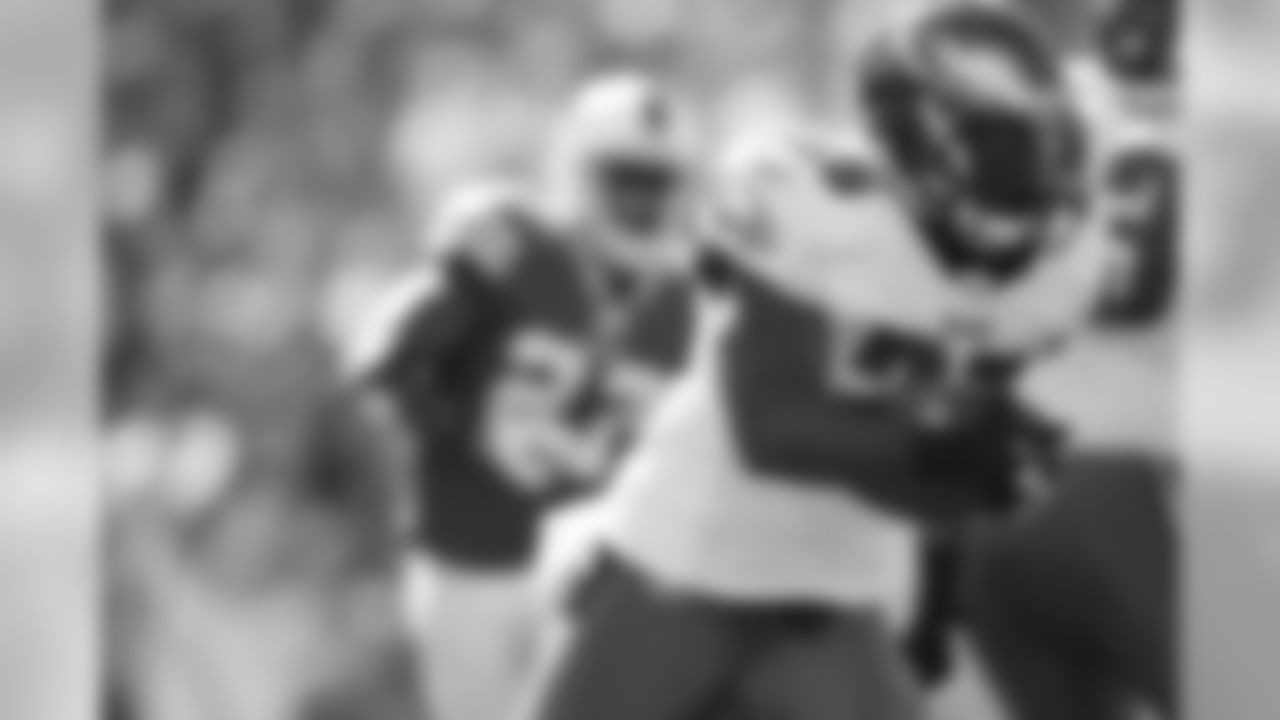The 'On the Clock' series on buffalobills.com begins just before the 2015 NFL draft as we explore league-wide trends and behind-the-scenes happenings with expert input from top-level decision makers and those on the front lines of the NFL personnel process. On the Clock is presented by BENRUS, the official Timepiece of the Buffalo Bills.
Our first installment examines the increased league-wide pursuit of the feature back, which isn't as hard to find as it used to be. In an era when the running back position might be devalued in terms of draft position, the quest to land the bell cow ball carrier is once again on the rise.
Committee used to mean contingency

In the 1970's when the NFL was largely a running league the goal was to land a premier running back. Evidence of that can be found in the 15 years of the NFL draft from 1969, when O.J. Simpson was the first overall pick of the Bills, to 1983. Over that span an average of two running backs were taken in the top 10 each year. More than five on average came off the board in the first 32 picks.
Back then it was common sense. Teams needed a feature back to carry the load so a premium was placed on the position. If the team's top ball carrier sustained a serious injury a committee of backs would be put together to make up for the loss as best as possible. The committee was strictly a contingency plan.
As the league morphed and changed into more of a passing league come the turn of the century, NFL clubs looked at the longevity of feature backs and reassessed a more appropriate draft value. Knowing in most cases that even the best running backs put up three or four years of top flight production before tailing off, in some cases rapidly, fewer and fewer found their way into round one of the draft.
Those clubs with franchise-caliber quarterbacks took it even a step further investing more in protecting their passer drafting offensive tackles while they cobbled together the rest of the offensive backfield with a committee of backs.
The committee model worked for recent Super Bowl champions like the Patriots, Colts, Packers, Saints and Giants, and the approach became even more popular. Even teams that lacked the difference-making quarterback adopted the committee approach.
However, as a good number of teams have struggled to find franchise quarterbacks of their own to compete with the upper echelon teams in the league that do have one, they're adopting a new formula to get to the postseason and beyond.
As a result the pendulum appears to be swinging back in the direction of a true feature back, and there's one key quality NFL scouts are looking for.
Avoiding the wear and tear
The backs who have traditionally taken the most wear and tear are the between the tackles runners, or so-called power backs. Ball carriers who can capably push the pile, but lack elusiveness and take on a lot of hits in the process.
What the league is discovering more and more in the last few years is there is a growing number of running backs capable of both breaking tackles and eluding the big hits that over time take their toll.
It's convincing some clubs, especially those who lack the franchise quarterback, that everything a team's running game needs can increasingly be found in one player. Evidence of that can be found when it comes to yards per carry average. Over the past two seasons of the 15 backs who carried the ball the most in the NFL, eight of them were also among the top 15 in yards per carry average.
Power backs of yesteryear would not always be at the top in both categories, but in today's NFL even the power backs like Marshawn Lynch, Eddie Lacy and Le'Veon Bell have a quality similar to that of some of the shiftier backs in the league like LeSean McCoy and Jamaal Charles.
Light on their feet
Though backs like Bell, Lacy and Lynch have the strength to move the pile, they also possess the feet needed to elude the big hits that often wear bigger backs down.
"Marshawn (Lynch) has great feet and the guy the Bengals took last year, (Jeremy) Hill has good feet," said San Diego GM Tom Telesco. "Le'Veon Bell has feet. If they don't have great feet to avoid tackles a little bit, they're probably not going to last that long in this league. That's the big thing. You've got to have feet."
Conversely, some of the smaller statured backs like McCoy, Charles and Matt Forte, can also carry more of the rushing load because they too are able to steer clear of the monster hits that put most backs their size on the injury report for a few weeks.
"The way I play the game, I never really take direct blows," said McCoy, who leads the league in total carries over the past two seasons with 626. "Knock on wood, I never really miss games and so I feel comfortable in my ability. God has blessed me tremendously in keeping me healthy."
From Pitt to Philly and on to Buffalo. RB LeSean McCoy's career is captured in these photos.

While at Pitt, McCoy started 22 of 25 career games, racking up 2,816 rushing yards on 584 carries (4.8 avg.) with 35 TDs. Also notched 65 receptions for 549 yards and one TD.

Finished his Pitt career ranked 4th in school history with 2,816 rushing yards.

McCoy was a unanimous Freshman All-American in 2007 after breaking the Big East freshman record with 1,328 rushing yards. He also broke Tony Dorsett's school freshman record with 14 rushing TDs.

McCoy earned second-team All-America honors in 2008 after rushing for 1,488 yards and 21 TDs, which was second in school annals behind Dorsett's 22 in 1976.

Had an arm span of 31 3/4 inches and a hand span of 8 7/8 inches at the combine, with a 4.5-second 40-yard dash.

McCoy's 637 rushing yards was the highest total ever for an Eagles rookie and his 945 yards from scrimmage ranked second

McCoy's 5.2-yard rushing average in 2010 ranked second in the NFL and was first in Eagles history among players with at least 200 carries…Led the Eagles and all NFL RBs with a career-high 78 catches.

Fisnished his second season running for 1,080 yards and seven scores on 207 carries to go along with 592 receiving yards and two scores on 78 catches.

Set a franchise record in 2011 and led the NFL with 17 rushing and 20 total touchdowns, joining RB Steve Van Buren (1945, 1947) as the only Eagles ever to lead the league in those categories.

2012: Missed four games due to injury but still accumulated 1,213 scrimmage yards (840 rushing, 373 receiving)…Scored a career-high three receiving touchdowns.

A first-team All-Pro and Pro Bowl selection in 2013, McCoy led the NFL in rushing yards (1,607), scrimmage yards (2,146) and rushes of 10+ yards (47). Became first Eagle to lead the NFL in rushing and scrimmage yards since RB Steve Van Buren did so in 1947

2013: Broke RB Brian Westbrook's franchise record (2,104 in 2007) of yards from scrimmage with 2,146 total yards

McCoy set the Eagles franchise rush record in 2013, gaining 217 yards on 29 carries with a pair of touchdowns against the Detroit Lions (12/8) in a massive snowstorm.

Earned his third career Pro Bowl selection in 2014 by ranking third in the NFL with 1,319 rushing yards and second in the league with 312 attempts.

Before signing in Buffalo, McCoy had played in 90 career games, starting 76, racking up 6,792 yards on 1,461 carries with 44 touchdowns ... added 2,282 yards and 10 TDs through 300 receptions ... Earned Pro Bowl honors in 2011, 2013 and 2014 in addition to first team All-Pro honors in 2013.


LeSean "Shady" McCoy is the son of Daphne and Ron McCoy…Has one son, LeSean, Jr....has an older brother, LeRon, who played in the NFL and a younger brother, Chris Henderson, played defensive tackle for Milford Academy.

Acquired in a trade by Buffalo in exchange for LB Kiko Alonso, McCoy signed in Buffalo on March 10, 2015.
"If they have great feet and can make someone miss in space that's valuable, but even being able to run through arm tackles helps," said Bills Director of Player Personnel Jim Monos. "Where they can take an edge and get through arm tackles. You don't have to break ankles. You have to have a feel and instinct as far as angles with running the ball."
That was why in last year's draft Buffalo made a strong effort to move up in the second round of the 2014 draft in an effort to land Ohio State RB Carlos Hyde. A back with the feet to elude the big hits and make linebackers miss was coveted by Buffalo, along with a lot of other clubs. In the end Buffalo couldn't find a willing trade partner and San Francisco landed Hyde.
"Carlos Hyde's a heck of a football player," said new 49ers head coach Jim Tomsula. "You've seen it in college, and you've seen it translate to the pro field. You've seen the plays, you've seen the guy run, his vision, he can plant, he can redirect, he's got some stuff. I like his speed, I like his burst. I'm really excited about Carlos Hyde."
Hyde was a second-round pick, as was Pittsburgh's Le'Veon Bell, who is seen by many as the most versatile of the athletic power backs in the league.
"Le'Veon Bell probably has the softest hands in the NFL right now," said ESPN NFL analyst and former NFL GM Mark Dominik of the talent at running back. "That's a real weapon for the Pittsburgh Steelers. That's a hard thing to deal with from a defensive perspective. When you have power, elusiveness and hands and can play all three downs, that's a dangerous combination. Those guys are the guys that I think the league is begging for again."
Buffalo was able to get that multi-faceted feature back in McCoy through a trade that surprised the league early in the offseason.
"It wasn't a lengthy trade process," said Bills GM Doug Whaley. "We reached an agreement pretty much in one day. They asked about some situations to see if we'd have an interest. We gave them a counterproposal and it was to their liking and then we just got approval from both ownership groups and worked out the paperwork. We feel that he is one of the top three running backs in the league and he can be a number one that's a workhorse so it was very significant."
With elusiveness a growing quality that's coveted in backs, knowing it often caters to a longer career, how do the NFL talent evaluators accurately identify the backs that have that combination of strength to ward off would-be tacklers while also possessing the feet to make a defender miss?
What to look for
Film study is where it begins and often ends for NFL scouts. There are many other elements to the scouting process, like measurables that are confirmed at the NFL Combine and at college pro days. In the end however, the study of a prospect's play in games is where the bulk of the evaluation lies.
Very often when scouting a back there's a specific way to chart a ball carrier's success rate to assess just how elusive they are.
"You want to see the guys who can make people miss at the second level," Dominik said. "That's a big thing. That means can he stutter step or what can he do at the second level once he's up to speed and he's gotten through the mush of the trenches? What does he do when the linebacker is coming at him or a safety is coming down or he's out in space and he's got a corner coming in?
"That second level movement is what you're looking for to say whether or not the guy has the feet to be able to get his body – because there's a lot moving forward and downhill hard – and you want to see if this guy can get lateral and move quick enough to elude. That's the 'make-you-miss' at the second level and a lot of people use old school scouting where if you can be at 60 percent or better at the 'make-you-miss' at the second level you've got a chance to be a really good back."
Best class of backs in a while
The depth of the running back class this year has only increased the interest for teams in finding a feature back of their own with the athleticism to keep the big hits on them to a minimum. Simply put it's a copycat league and a team that is looking to duplicate the success of the perennial playoff clubs that rely on strong ground attacks will try to land a rushing talent in the same mold.
The good news for those clubs seeking such a talent is they won't necessarily have to make such a commitment at the top of the draft.
"Deep. It's deep and it's one of those classes that we're excited about," said Whaley. "I think in the draft all together there's some value between rounds two through five where you're going to get some guys who will make an impact in this league."
This year's class of running backs is taking it upon themselves to convince NFL personnel executives that their position should not be devalued. Among them are Wisconsin's Melvin Gordon and Boise State's Jay Ajayi. Both are seen as three-down backs that can run with power and have enough elusiveness and pass catching ability. Gordon has even been projected as a first-round draft choice, something that hasn't happened at the running back position since the 2012 draft.
"I think it's a great class of running backs," said Gordon. "We have a lot of talent in this class. I talked to a lot of the guys in this class, the running back group. I think we're a close group and I just think we have the talent to go in the first (round) this year."
"I think there is a resurgence of running backs," Ajayi said. "Just looking at this class of running backs that we have in this draft class, I think this is a very strong class and I think for the years to come that the NFL is going to see a rise, and a new running back class will just help the position grow and become more of a prime position."
Coaches covet ground gainers
Even though the numbers from recent years show a downturn in the number of bell cow backs currently in the NFL, the incoming talent could change that conversation quickly.
"The runner does matter. I think we've all seen that running backs don't seem to be drafted quite as high as they used to," said Dallas Cowboys head coach Jason Garrett, whose team went to the playoffs for the first time in five seasons after finishing second in rushing behind NFL leading rusher DeMarco Murray. "I think that has a lot to do with the longevity of the player. But I do think the value of the running back is really, really critical to having a great running football team. I think the history in the NFL proves that. Recent history proves that."
"People are saying that running back is devalued and I completely disagree with that," Dominik said. "Ask anybody in Seattle how devalued the running back is. For them it's pretty important."
The On the Clock series is presented by BENRUS, the official Timepiece of the Buffalo Bills.
LB Tremaine Edmunds signs rookie contract
Tremaine Edmunds became the latest member of the Bills 2018 draft class to sign his rookie contract Saturday.











